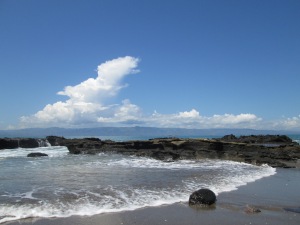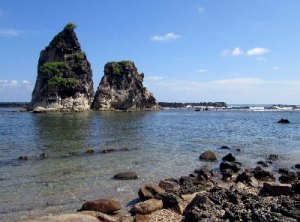 Regardless if you are a beginner in the world of photography or already experienced, for many of us, our first love is landscape photography. There is something very magical about the perfect landscape photo made that can not help but attract the attention of someone. On the other side of the lens, taking pictures of nature not only gives us endless opportunities for stunning images, but also serves as a great way to challenge ourselves as a photographer.
Regardless if you are a beginner in the world of photography or already experienced, for many of us, our first love is landscape photography. There is something very magical about the perfect landscape photo made that can not help but attract the attention of someone. On the other side of the lens, taking pictures of nature not only gives us endless opportunities for stunning images, but also serves as a great way to challenge ourselves as a photographer.At any time , the elements in nature can change , which can drastically affect the outcome of the photo. While a great landscape photography may seem difficult to master , but not as scary as you might think . In this tutorial landscape photography , I have compiled a list of techniques and tips that will surely help you learn how to take photos of the stunning scenery.
Look for a nice foreground elements to maximize the depth and perspective
You will be amazed how simple actions including foreground elements in a landscape photograph can really change the scene . By adding the element foreground of your photos , images can directly illustrate a deeper sense of perspective and depth . Without it , the photo may look too flat for your tastes .It is also better to use a wide-angle lens . Wide-angle lens , with designs increase the sense of depth in the shots . Combining this with the foreground elements will actually perceived open space in the scene .
With a wide-angle lens foreground elements will appear much larger than the background object , maximizing the sense of depth
Finding the perfect background elements to include in your scene can take just a few minutes or a few hours. Before doing your shots, explore until you find the location of the best elements to be included, whether the flower beds, rock group, reflection pond, or a falling tree branch. Be creative with your choice
Take advantage of bad weather
When bad weather affect many photographers pack up their gear and go home . What they do not know is that they lose some amazing opportunities for good landscape photography .We've all seen countless photos that have been taken on sunny days . Which is fine . But , think about the pictures you have seen the worst of nature consists of : a car buried in the snow after a snow storm for example , a dramatic rain clouds it was a wonderful thing to behold
Since most people are afraid when the weather is bad , and live in , this is a good time for you to catch some nice photos . As a photographer trying to not let the bad weather scare you , but you intrigue to capture some amazing images .
Documenting severe weather is happening ( or even after it has passed ) are interesting for viewers to see .
Just be sure to take proper precautions and stay safe while photographing scenes of bad weather. Always put your safety first.
The best landscape photography requires planning

Often times, when you see a picture of a great landscape photo, you think to yourself "admire, lighting and composition are so perfect! Photographer lucky by being in the right place at the right time."
Usually, this is far from the truth!
Photos of the most beautiful scenery took a huge amount of time and planning. It is almost impossible for a photographer to show up at a location at random times on random days and expect great results.
JIf you want to capture the best photos to be given the best scenes from a previous location and take pictures of some of the tests throughout the day. With so could see how natural light affects the scene and know when you should return.
Then, when you return, you can arrive about 30 minutes before time, organize your composition and are ready to take good pictures when the lighting is perfect to move into place.
Then, when you return, you can arrive about 30 minutes before time, organize your composition and are ready to take good pictures when the lighting is perfect to move into place.
As a rule of thumb, it's usuallCreative by capturing various angles
Many new photographers instinctive shooting landscape photos with the tripod set them on the ground at eye level and then frame the shot. Yes, this can lead to a good photo, but a lot of other great opportunities are being missed
If you really want your photos stand out from other photographers work, you have to work hard to frame the general settings in a creative way.y best to take landscape photos during the golden hour (or magic hour) after sunrise or before sunset.
You can do this in several ways. Try to capture a different perspective. Shot from above the high or very low to the ground. Compose the shot using the Out of Focus Foreground Framing. The position of the natural elements in a scene in a unique way. Capturing the scene at night. Use reflection. And so forth.
Bracket your exposures
When you start in landscape photography, you will see that taking a photograph is usually not result in capturing the full potential of the scene. Often, light dark areas do not fit.This common problem can be easily solved by bracketing your exposure and you should make it a common practice to do so at every shoot landscape.
Exposure bracketing you only meant to capture the same composition with multiple exposure levels. Normally, it is between 3-5 shots vary in brightness exposure. This allows you to maximize the dynamic range in a photograph.
how it works:
Capturing the image using your camera settings are considered as a whole the correct exposure for the scene. Then, use the exposure compensation button (if shooting in auto mode) or aperture, shutter speed or ISO setting (when shooting in manual mode) to force one stop overexposure. Furthermore, forcing one stop underexposure. This resulted in three different exposures.
If you want to catch five exposures, only needed two shots. One to two stop overexposure and the other with two stop underexposure.
Then, in a photo editing software, such as Adobe Photoshop, Elements, Lightroom or Apple Aperture, you can automatically combine 3-5 photos together to create one image with dynamic range more attractive.
All the elements in the scene, from the dark shadows to bright highlights will be exposed correctly.
Capturing the image using your camera settings are considered as a whole the correct exposure for the scene. Then, use the exposure compensation button (if shooting in auto mode) or aperture, shutter speed or ISO setting (when shooting in manual mode) to force one stop overexposure. Furthermore, forcing one stop underexposure. This resulted in three different exposures.
If you want to catch five exposures, only needed two shots. One to two stop overexposure and the other with two stop underexposure.
Then, in a photo editing software, such as Adobe Photoshop, Elements, Lightroom or Apple Aperture, you can automatically combine 3-5 photos together to create one image with dynamic range more attractive.
All the elements in the scene, from the dark shadows to bright highlights will be exposed correctly.
Let nature be your teacher
You can learn all the tips and tricks in the world about how to take photos of scenery or landscape better, but there are no schools or workshops that will teach you how to be a better landscape photographer of nature itself.Only hours of practice in the field with open eyes and desire for creativity will make you a better photographer









